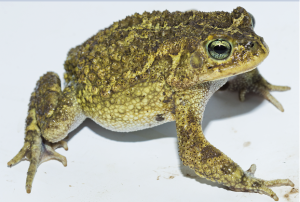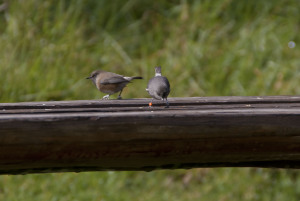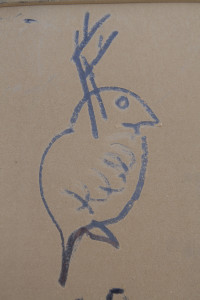Current research
Since January 2023, I have been a researcher at IRD (France), where I develop my own research on the population genomics of transposable elements, and the application of population genomics tools to conservation. I am currently working on the date palm (Phoenix dactylifera), a keystone crop of oasis agrosystems.
I recently obtained funding from the French National Research Agency (ANR) and will soon recruit a PhD student (September 2024) and a post-doctoral researcher (starting January 2025). I am also looking for a Masters student starting in January 2024 (with the option to continue for a PhD). Contact me if interested! Below is a summary of the project:
The interaction between transposable elements (TEs) and their hosts is one of the most intricate co-evolutionary processes found in nature. Quantifying how TEs impact their host’s fitness has practical relevance in relation to real-world applications, such as understanding the molecular bases of selected phenotypes, or assessing mutational load in crops (so-called “cost of domestication”). The following project will focus on the impact of TEs on the host’s fitness, using the date palm (Phoenix dactylifera) as a model. This crop is of major economic and social importance in the Middle East and Northern Africa, and its consumption keeps rising every year. However, it is also threatened by more frequent droughts and increasing salinity due to climate change. A precise characterization of its genetic diversity is therefore essential to understand the adaptability of this species to growing environmental pressures. The project will use genomic data to examine the role of polymorphic TEs in selection and differentiation of date palm varieties across the species range. It will revolve around two questions: What is the distribution of TEs fitness effects in date palms? Can this distribution be predicted from functional genomic features such as gene regulatory networks? We will develop and apply new methods in population genomics to estimate the fraction of advantageous and harmful polymorphic TEs. We will compare results with de novo functional annotations of chromatin organization and regulatory networks to draw a comprehensive view of TEs’ impact on a keystone perennial species of agronomic interest for both developed and developing countries.
Past research
Models
As populations and species diverge from each other, a progressive loss of shared polymorphisms and accumulation of fixed alleles is expected. This is impacted by neutral processes (e.g. genetic drift), sexual and natural selection, that can have antagonistic effects on genetic diversity. In addition, the accumulation of incompatibilities between genomes from different populations can lead to genetic conflict and reproductive isolation that is independent of the environment (intrinsic isolation). The interaction between these processes may vary along the genome, creating a mosaic of regions displaying different rates of divergence. A key aspect of many recent studies in evolutionary biology is to establish how these different processes shape genomic variation.
Most genomic studies on speciation focus on single nucleotide polymorphisms (SNPs), and neglect other sources of variation, like transposable elements (TE) insertions. TEs are DNA fragments that move through genomes, generating mutations, and facilitating ectopic recombination. They are often in conflict with their host’s genome and are considered as parasites that are often removed from genomes by purifying selection. This type of structural variation has the potential to provide a selective advantage since it can quickly modify phenotypes, for example by triggering epigenetic mechanisms and enhancing gene expression due to the insertion of a TE promotor. However, it remains unclear how their number is controlled by the host and to what extent they can become the target of positive selection. I will quantify the role of transposable elements in speciation either due to positive selection or the build-up of intrinsic incompatibilities after isolation and drift, using the green anole (Anolis carolinensis), the date palm (Phoenix dactylifera), and the stiff brome (Brachypodium dystachion) as models. All these species have abundant genome resources and annotations. I am also using the house mice (Mus musculus) as a model to study TE variation.
I will assess the following questions: i) which regions and type of variation (SNPs, TEs, large-scale rearrangements) resist to introgression, ii) is divergence driven by genes involved in the same pathways, iii) is there any linkage disequilibrium between outliers consistent with epistatic interactions and large-scale inversions that may facilitate coupling between loci involved in local adaptation and incompatibilities. I intend to quantify the relative importance of these processes by using more extensively the information about gene function and pathways. I will quantify linkage disequilibrium between genes under selection to assess how pleiotropy and large-scale rearrangements facilitate coupling between extrinsic and intrinsic barriers to gene flow.

I am using African toads (genus Amietophrynus) as a model to investigate how selection, demography and hybridization shape genomes architecture and diversity. I am especially interested by a complex of three species (A. regularis, A. kerinyagae, A. asmarae), one of them (A. asmarae) being the result of hybridization between the two others, followed by allotetraploidization
Hybridization followed by tetraploidization is fascinating from an evolutionary perspective since it immediately doubles the amount of genetic diversity on which selection can act. The genomes of newly formed polyploids often experience rapid loss of homologs, but also neofunctionalization or specialization of each parental copy. While there are many examples in plants, allotetraploids have rarely been studied in Vertebrates. A remarkable feature of the Amietophrynus system is that the two parental species are still extant, which is not the case for Xenopus laevis. This allows to directly compare, for the first time in amphibians, the genomes of the parents and their copies in the hybrid. In addition, there is a documented shift in the ecological requirements of A. kerinyagae in Ethiopia compared to Kenya. In Ethiopia, A. kerinyagae tends to be found at higher altitudes, possibly facilitating isolation with its daughter species. This suggests niche divergence between the hybrid and the parental species.
This system is particularly suited to quantify the impact of abruptly increased genetic variability on genome structure and its impact on fitness and local adaptation. I am focusing now on questions relative to the preferential expression of one parental copy in the hybrid, as well as focusing on candidate genes that should benefit from increased diversity, such as the MHC.
Photo credit: Jacobo Reyes-Velasco
The study of processes that maintain adaptive genetic diversity have long interested evolutionary biologists. From this perspective, host-parasite coevolution provides valuable insights. Reciprocal interactions between hosts and parasites can lead to balancing selection and might actively maintain polymorphism at immunity genes in the host, as observed in Vertebrates for genes of the Major Histocompatibility Complex (MHC). In Daphnia magna, a model species in epidemiology and evolutionary biology, the interaction with the obligate bacterial endoparasite Pasteuria ramosa follows a matching-allele model, where parasites strains infect specific host genotypes and hosts resist to specific parasites. Under this model, resistance for two parasite genotypes is reversed by switching one allele at one host locus. This model allows for cyclical temporal variation in allele frequencies (Red Queen dynamics). Such negative frequency-dependent selection imprints genetic spatio-temporal variation at selected loci. I am using candidate genes and genomics tools to characterize the evolutionary dynamics of this interaction, but am more focusing on the host, Daphnia magna, for which genomic resources are more reliable.
 Color polymorphisms are now a classical theme in evolutionary biology. As they can be easily characterized they allow for precisely studying the links between genotypic and phenotypic changes. However, while studies on model or near-model species have provided a dramatic database for genetic bases of coloration, few is still known about the genetic architecture of polymorphisms occurring in natural populations.
Color polymorphisms are now a classical theme in evolutionary biology. As they can be easily characterized they allow for precisely studying the links between genotypic and phenotypic changes. However, while studies on model or near-model species have provided a dramatic database for genetic bases of coloration, few is still known about the genetic architecture of polymorphisms occurring in natural populations.
During my Ph.D. I worked on the Réunion Grey White-Eye (Zosterops borbonicus), an endemic species displaying striking patterns of colour variation. I contributed to a better understanding of the evolutionary dynamics of this system by characterizing the population genetics dynamics in the polymorphic complex found at high altitude. I also used candidate genes and genomic approaches to characterize the proximate mechanisms underlying this polymorphism.
Publications
Bertrand J., Delahaie B., Bourgeois Y., Thébaud C. (2013). Comment naissent de nouvelles espèces? Le cas du zostérops gris de La Réunion. – How do new species arise? The case of Grey White-Eye on Réunion island. L’Oiseau Magazine – french journal of ornithology.
Bourgeois Y. (2012) Les parents lèguent plus que des gènes : l’héritabilité non-génétique. – Parents bequeath more than genes: the non-genetic heritability. Plume ! – popular science journal.
Note: report on COV-19 epidemics in Portsmouth region available at https://github.com/YannBourgeois/A-phylodynamic-analysis-of-SARS-CoV-2-outbreak-in-a-densely-populated-city-Portsmouth-UK- [29] Bourgeois Y.X.C., Bertrand J.A.M., Delahaie B., Cornuault J., Holota H., Thébaud C., Milá B. (2020). Differential divergence in autosomes and sex chromosomes is associated with intra-island diversification at a very small spatial scale in a songbird lineage. Molecular Ecology. Preprint on BioRxiv. [28] Bourgeois Y.X.C., Boissinot S. (2019). Selection at behavioral, developmental and metabolic genes is associated with the northward expansion of a successful tropical colonizer. Molecular Ecology. Preprint on BioRxiv. [27] Bourgeois Y.X.C., Boissinot S. (2019). On the population dynamics of junk: a review on the population genomics of transposable elements. Genes. [26] Bourgeois Y.X.C., Ruggiero R.P., Manthey J., Boissinot S. (2019). Recent secondary contacts, X chromosome divergence and variable recombination rates shape genomic diversity in the model species Anolis carolinensis. Genome Biology and Evolution. Preprint on BioRxiv. [25] Boissinot S., Bourgeois Y., Manthey J.D., Ruggiero R. (2019). The mobilome of reptiles: Evolution, Structure, Function. Cytogenetic and Genome Research. [24] Bourgeois Y.X.C., Stritt C., Gordon S., Vogel J., Walser J-C., Roulin A. (2018). Genome-wide scans of selection highlight the impact of biotic and abiotic constraints in natural populations of the model grass Brachypodium dystachion. The Plant Journal. Preprint on BioRxiv. Selected for cover and research highlight for issue 96-3. [23] Roman I.*, Bourgeois Y.*, Reyes-Velasco J., Jensen O.P., Waldman J., and Boissinot S. (2018). Contrasted patterns of divergence and gene flow among five fish species in a mongolian rift lake following glaciation. Biological Journal of the Linnaean Society. [22] Toenshoff E.R., Fields P.D., Bourgeois Y.X.C., Ebert D. (2018). The end of a 60-year riddle: Identification and genomic characterization of an iridovirus, the causative agent of White Fat Cell Disease in zoo plankton. G3: Genes|Genomes|Genetics. [21] Reyes-Velasco J., Manthey J.D., Bourgeois Y., Freilich X., Boissinot S. (2018). Revisiting The Phylogeography, Demography and Taxonomy of The Frog Genus Ptychadena in The Ethiopian Highlands With The Use Of Genome-Wide SNP Data. PloS One. [20] Delahaie B., Cornuault J., Masson C., Bertrand J.A.M., Bourgeois Y.X.C., Milá B., Thébaud C. (2017). Narrow hybrid zones in spite of very low population differentiation in neutral markers in an island bird species complex. Journal of Evolutionary Biology. [19] Ruggiero R.P.*, Bourgeois Y.X.C.*, Boissinot S. (2017). LINE insertion polymorphisms are abundant but at low frequencies across populations of Anolis carolinensis. Frontiers in Genetics. [18] Bourgeois Y.X.C.*, Roulin A.*, Müller K., Ebert D. (2017). Association mapping and genome scan for selection suggest a major role of parasites in local adaptation of a planktonic crustacean. Evolution. [17] Bento G., Routtu J., Fields P., Bourgeois Y.X.C., Du Pasquier L., Ebert D. (2017). The genetic basis of resistance and matching-allele interactions of a host-parasite system: The Daphnia magna-Pasteuria ramosa model. PloS Genetics. [16] Bourgeois Y.X.C., Delahaie B., Gautier M., Lhuillier E., Malé P-J.G., Bertrand J.A.M., Cornuault J., Wakamatsu K., Bouchez O., Mould C., Bruxaux J., Holota H., Milá B., Thébaud C. (2017). Previously undescribed locus on chromosome 1 underlies a melanic plumage polymorphism in a wild passerine bird. Royal Society Open Science. [15] Roulin A.C., Bourgeois Y.X.C., Stiefel U., Walser J-C., Ebert D. (2016). A photoreceptor underlies natural variation in Daphnia magna diapause induction. Molecular Biology and Evolution. [14] Bourgeois Y.X.C., Bertrand J.A.M., Delahaie B., Cornuault J., Duval T., Milá B., Thébaud C. (2016). Candidate gene analysis suggests untapped genetic complexity in melanin-based pigmentation in birds. Journal of Heredity. [13] Bertrand J.A.M.*, Delahaie B.*, Bourgeois Y.X.C., Duval T., García-Jiménez R., Cornuault J., Pujol B., Thébaud C., Milá B. (2016). The role of natural selection and historical factors in driving population differentiation along an elevational gradient in an island passerine bird. Journal of Evolutionary Biology. [12] Bourgeois Y.X.C.*, Bertrand J.A.M.*, Thébaud C. (2016). Point-count estimation of Réunion Grey White-eye population density for investigating a case of small spatial scale variation in a bird. The Ostrich. [11] Besnard G., Bertand J.A.M., Delahaie B., Bourgeois Y.X.C., Lhuillier E., Thébaud C. (2016). Valuing museum specimens: high-throughput DNA sequencing on historical collections of New Guinea crowned pigeons (Goura). Biological Journal of the Linnean Society. [10] van de Crommenacker J., Bourgeois Y.X.C., Warren B., Jackson H., Fleischer-Dogley F., Groombridge J., Bunbury N. (2015). Using molecular tools to guide management of invasive alien species: assessing recent hybridization in an introduced bird population. Diversity and Distributions. [9] Cornuault J., Delahaie B., Bertrand J.A.M., Bourgeois Y.X.C., Milá B., Heeb P. & Thébaud C. (2015). Morphological and plumage colour variation in the Réunion Grey White-eye (Aves: Zosterops borbonicus): assessing the role of selection. Biological Journal of the Linnean Society. [8] Casquet J., Bourgeois Y.X.C., Cruaud C., Gavory F., Gillespie R.G., Thébaud C. (2015). Community assembly on remote islands: a comparison of Hawaiian and Mascarene spiders. Journal of Biogeography. [7] Bertrand J.A.M., Bourgeois Y.X.C, Delahaie B., Duval T., García-Jiménez R., Cornuault J., Heeb P., Milá B., Pujol B., Thébaud C. (2014). Extremely reduced dispersal and gene flow in an island bird. Heredity. [6] Bourgeois Y.X.C., Lhuillier E., Cézard T., Bertrand J.A.M., Delahaie B., Cornuault J., Duval T., Bouchez O., Milá B., Thébaud C. (2013). Mass production of SNP markers in a nonmodel passerine bird through RAD sequencing and contig mapping to the zebra finch genome. Molecular Ecology Resources. [5] Bourgeois Y.X.C. (2013). Génétique évolutive d’un cas extrême de polymorphisme de la coloration du plumage chez un oiseau insulaire, Zosterops borbonicus (Zosteropidae). PhD thesis from Paul Sabatier University, Toulouse. [4] Cornuault J., Khimoun A., Harrigan R.J., Bourgeois Y.X.C., Milá B., Thébaud C., Heeb P. (2013). Role of ecology in the geographical separation of blood parasites infecting an insular bird. Journal of Biogeography. [3] Bourgeois Y. X. C., Bertrand J.A.M., Thébaud C., Milá B. (2012). Investigating the role of the Melanocortin-1 receptor gene in an extreme case of microgeographical variation in the pattern of melanin-based plumage pigmentation. PloS One. [2] Warren B.H., Bermingham E., Bourgeois Y., Estep L.K., Prys-Jones R.P., Strasberg D., Thébaud C. (2012). Hybridization and barriers to gene flow in an island bird radiation. Evolution. [1] Bertrand J. A. M., García-Jiménez R., Bourgeois Y., Duval T., Heeb P., Thébaud C., Milá B. (2011) Isolation and characterization of twelve polymorphic microsatellites loci for investigating an extreme case of microgeographical variation in an island bird (Zosterops borbonicus). Conservation Genetics Resources.
* shared first authorship.
Research skills
Field experience
- Design and realization of a census study on Zosterops borbonicus populations in highlands from Réunion.
- Fieldwork in French Guiana to obtain morphometric data on leatherback turtles.
- Fieldwork in Siberia to collect Daphnia samples
- Fieldwork in Ethiopia to collect birds and frog samples.
- Capture, morphometric studies and tissue sampling on protected animals (endemic birds from Mascarenes, endangered sea turtles).
- Diving: CMAS level 1. PADI Advanced Open Water.
- Emergency first responder.
Laboratory skills
- Methods in molecular biology: DNA and RNA extraction, PCR, cloning, restriction, primer design, work with precious samples.
- Preparation of Next Generation Sequencing (NGS) libraries and adaptation of RAD-seq protocol to HiSeq2000 chemistry.
- Awareness of techniques for target enrichment and resequencing.
- Animal manipulation certifications: The CITI Basic Course in Laboratory Animal Welfare for Investigators, Staff and Students, Reducing Pain and Distress in Laboratory Mice and Rats, Working with Amphibians in Research Settings.
Analytical skills
- Statistics (R)
- Chromatograms interpretation (Sequencher, Geneious)
- Microsatellites preliminary analyses (GeneMapper, Microchecker)
- Population genetics (GENEPOP, Arlequin, DNAsp, IMa, Migrate-n)
- Population genomics (see www.methodspopgen.com)
- Phylogeny and datations (MrBayes, BEAST, RAxML)
- Aproximate Bayesian Computation (ms, fastsimcoal, package abc in R)
- Bioinformatics (UNIX, regular expressions, shell scripts, classical tools in NGS such as bwa, LastZ, velvet, Picard tools).
- Niche modeling (Maxent, RandomForest package in R, extraction of environmental data, ENMTools).
- Densities estimation (Distance)
- Office, Adobe CS5.

